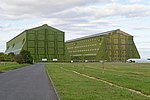Cotton End
2019 establishments in EnglandBedfordshire geography stubsBorough of BedfordCivil parishes in BedfordshirePopulated places established in 2019 ... and 1 more
Villages in Bedfordshire

Cotton End is a small village and civil parish on the outskirts of Bedford. It became its own parish as of 1 April 2019, having previously been part of the parish of Eastcotts. Ordnance Survey maps from the 1880s show its name as 'Cardington Cotton End'.There is a primary school, a Baptist church, a village hall and a pub. The Baptist chapel was founded here in 1777. In 1912, Cotton End was described as a scattered hamlet with a school and a farm. It lies further down the A600 road from Shortstown. A new woodland created by the Forest of Marston Vale in 2005 called Shocott Spring.
Excerpt from the Wikipedia article Cotton End (License: CC BY-SA 3.0, Authors, Images).Cotton End
High Road,
Geographical coordinates (GPS) Address Nearby Places Show on map
Geographical coordinates (GPS)
| Latitude | Longitude |
|---|---|
| N 52.1 ° | E -0.4166 ° |
Address
Cotton End Lower School
High Road 37
MK45 3AA
England, United Kingdom
Open on Google Maps









